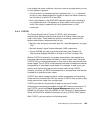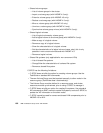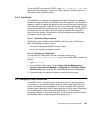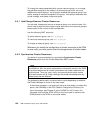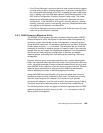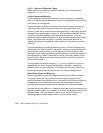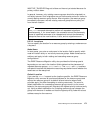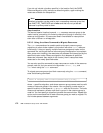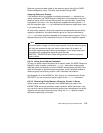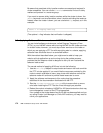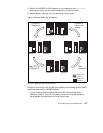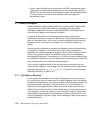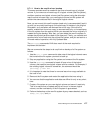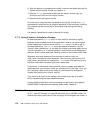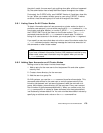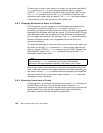
Cluster Management and Administration 173
Note that you cannot add nodes to the resource group list with the DARE
Resource Migration utility. This task is performed through SMIT.
Stopping Resource Groups
If the location field of a migration contains the keyword stop instead of an
actual nodename, the DARE Resource Migration utility attempts to stop the
resource group, which includes taking down any service label, unmounting
file systems, and so on. You should typically supplement the keyword
stop
with the migration type sticky to indicate that the resource stays down, even
if you reboot the cluster.
As with sticky locations, sticky stop requests are superseded by new sticky
migration requests for the same resource group, or they are removed by
default, non-sticky migration requests for the same resource group. Thus, a
stopped resource will be restarted at the time of the next migration request.
8.5.3.4 Using the clfindres Command
To help you locate resources placed on a specific node, the DARE Resource
Migration utility includes a command,
clfindres, that makes a best-guess
estimate (within the domain of current HACMP configuration policies) of the
state and location of specified resource groups. It also indicates whether a
resource group has a sticky location, and it identifies that location.
See Appendix A of the
HACMP for AIX, Version 4.3: Administration Guide
,
SC23-4279, for the syntax and typical output of the
clfindres command.
8.5.3.5 Removing Sticky Markers When the Cluster is Down
Sticky location markers are stored in the HACMPresource class in the
HACMP ODM and are a persistent cluster attribute. While the cluster is up,
you can only remove these locations by performing a subsequent non-sticky
migration on the same resource group, using the
default special location
keyword or specifying no location.
Be careful when using a non-sticky stop request, since the resource group
will likely be restarted at the next major cluster event. As a result, all
non-sticky requests produce warning messages. A non-sticky stop could
be used to halt a cascading resource group that has
INACTIVE_TAKEOVER set to false during periods in which its primary
node is down.
Note



